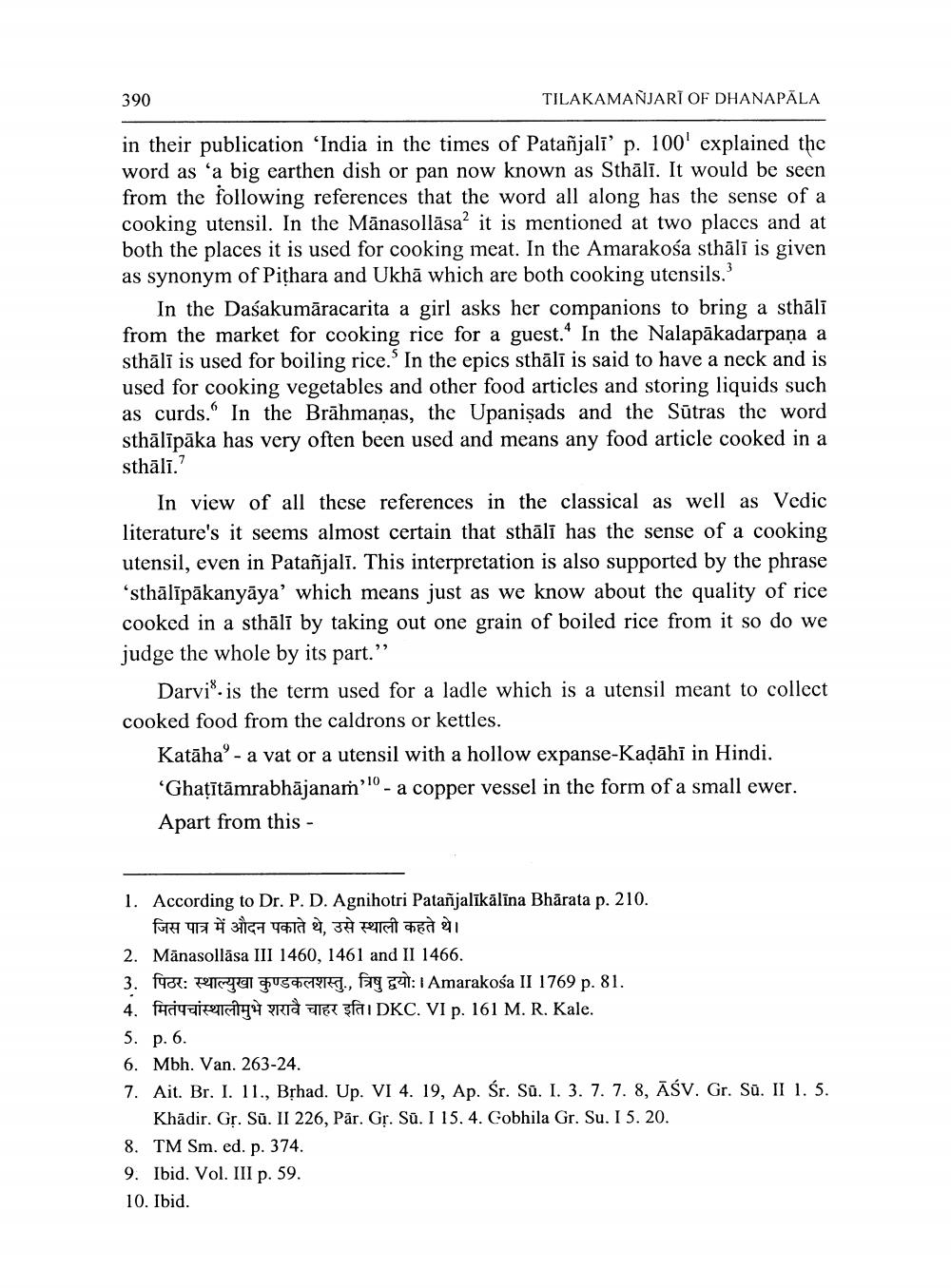________________
390
TILAKAMANJARĪ OF DHANAPĀLA
in their publication 'India in the times of Patañjali' p. 100' explained the word as 'a big earthen dish or pan now known as Sthālī. It would be seen from the following references that the word all along has the sense of a cooking utensil. In the Mānasollāsa? it is mentioned at two places and at both the places it is used for cooking meat. In the Amarakośa sthālī is given as synonym of Pithara and Ukhā which are both cooking utensils.
In the Daśakumāracarita a girl asks her companions to bring a sthāli from the market for cooking rice for a guest." In the Nalapākadarpana a sthālī is used for boiling rice. In the epics sthālī is said to have a neck and is used for cooking vegetables and other food articles and storing liquids such as curds. In the Brāhmaṇas, the Upanişads and the Sūtras the word sthālīpāka has very often been used and means any food article cooked in a sthāli.?
In view of all these references in the classical as well as Vedic literature's it seems almost certain that sthāli has the sense of a cooking utensil, even in Patañjalī. This interpretation is also supported by the phrase ‘sthālīpākanyāya' which means just as we know about the quality of rice cooked in a sthālī by taking out one grain of boiled rice from it so do we judge the whole by its part."
Darvi® is the term used for a ladle which is a utensil meant to collect cooked food from the caldrons or kettles.
Katāha' - a vat or a utensil with a hollow expanse-Kadāhī in Hindi. 'Ghatītāmrabhājanaṁ - a copper vessel in the form of a small ewer. Apart from this -
1. According to Dr. P. D. Agnihotri Patanjalikālīna Bhārata p. 210.
जिस पात्र में औदन पकाते थे, उसे स्थाली कहते थे। 2. Mānasollāsa III 1460, 1461 and II 1466. 3. ful: Teriya qu L., Frg &41: Amarakośa II 1769 p. 81. 4. fuiquipmu rà la sfai DKC. VI p. 161 M. R. Kale. 5. p. 6. 6. Mbh. Van. 263-24. 7. Ait. Br. I. 11., Brhad. Up. VI 4. 19, Ap. Śr. Sū. I. 3. 7. 7. 8, ĀŠV. Gr. Sū. II 1. 5.
Khādir. Gr. Sū. II 226, Pār. Gr. Sū. I 15.4. Gobhila Gr. Su. I 5. 20. 8. TM Sm. ed. p. 374. 9. Ibid. Vol. III p. 59. 10. Ibid.




